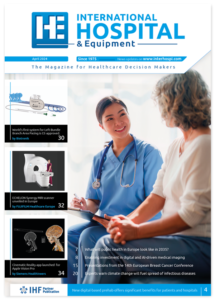Engagement issues still stand between wearables’ and healthcare
A survey finds that consumers are enthusiastic about the future of wearables, especially in health and wellness, but they’re still having issues staying motivated. Roughly one-third of those who bought smart clothing have admitted they aren’t using them as much anymore. The drop-off rate meanwhile, is 18 percent for fitness bands, 22 percent for smart watches and 16 percent for smartglasses. According to the survey, consumers say they lose their enthusiasm for wearables after a while, finding them ineffective, uncomfortable or unstylish, or finding that they can’t synch seamlessly with a smartphone or hold battery power.
‘For consumers to commit to wearables for the long term, a device should not only be attractive and comfortable, but should also reach beyond data delivery to provide knowledge and benefits unavailable elsewhere,’ states the report, titled ‘The Wearable Life 2.0: Connected Living in a Wearable Wiorld.’
While that news is discouraging, healthcare should take note of the rising numbers of consumers investing in wearables. Of those surveyed, 45 percent own a fitness band, 27 percent now own a smartwatch and 12 percent own sensor-embedded clothing. And while the percentage of people who see a bright future for wearable has jumped 16 percent since PwC’s 2014 survey, the number of respondents who have security or privacy concerns about wearables has dropped about 8 percent in those past two years.
The survey also highlights a trust issue in healthcare. While the provider community hasn’t embraced consumer-facing wearables because they don’t think the data coming from them is reliable enough to use in clinical situations, consumers have their concerns as well.
It’s a good news-bad news issue. According to the survey, some 65 percent of consumers are excited about the possibility of using a wearable provided or endorsed by their doctor’s office, while 62 percent feel that way about wearables coming from a hospital or their insurer. On the other hand, only 41 percent would trust a wearable coming from their doctor, while only 38 percent would trust a hospital-supplied wearable and only 34 percent would place their faith in a payer-supplied device.
Farther down the list, 57 percent are excited about a wearable coming from their pharmacy, but only 29 percent would trust the device. And 25 percent of those surveyed said they wouldn’t trust their personal information to any branded wearable.
So what motivates someone to use a wearable? According to the survey, more than half say they’d be motivated by a monetary reward, while 45 percent like gaming features that allow them to compete with others. Another 45 percent would use wearables if they provided information that they’d otherwise not have, and 36 percent want it to look good.
They also want the device to synch with their smartphone – 78 percent said they’d use a wearable more frequently if it connected seamlessly to their smartphone, and 97 percent are happy with a smartphone application supporting the wearable.
mHealth Intelligence http://tinyurl.com/ht3q2r3

